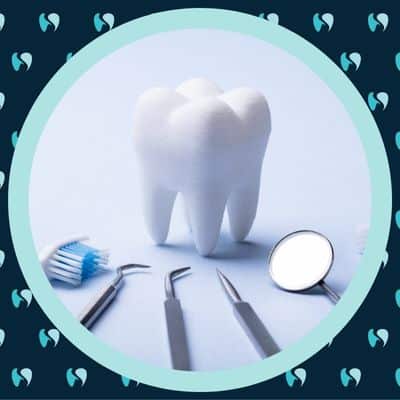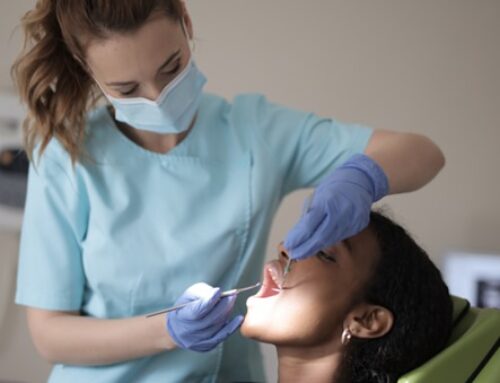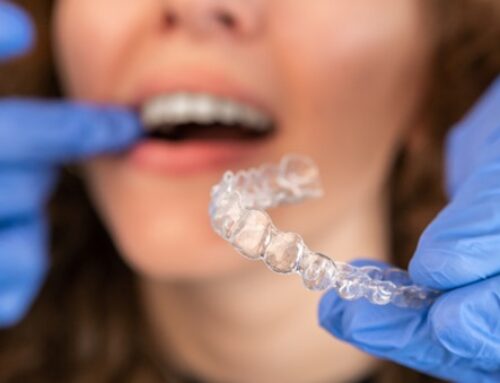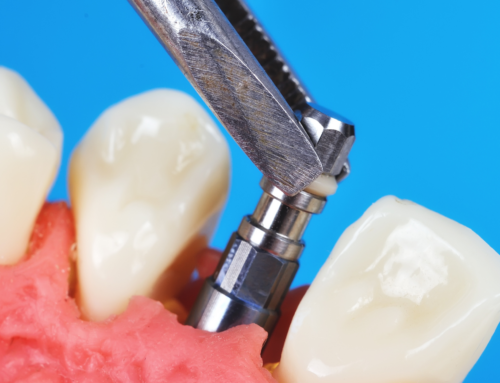Just the thought of setting foot into a dentist’s office is anxiety inducing for countless people. Visions of intimidating dental tools being placed in the mouth while a dentist rattles off a laundry list of unfamiliar terminology often cloud the minds of nervous patients. An excellent way to combat some of the anxiety associated with dental visits is by familiarizing yourself with some of the most common terms you’re likely to hear when going in for a routine check-up and cleaning. Rest assured: most of the words are just fancy names for common procedures. Earwood Dentistry shares some of the most common dental terms and what they really mean, so your visit can be easy and stress-free.

Bruxism- If you’re known to clench or grind your teeth, you’re likely to hear the term bruxism during a dental exam. Bruxism, after all, simply refers to excessive grinding and clenching of the teeth. Often, patients are not even aware they suffer from bruxism because the majority of their clenching and grinding takes place at night when they are asleep. Many dentists will recommend a nighttime mouth guard to help minimize the impact of nocturnal bruxism.
Calculus- Ever wonder why your hygienist is discussing a high school math subject while cleaning your teeth? When you’re in a dental chair, chances are, the calculus your hygienist is referring to has nothing to do with a math book. In the dental world, calculus is a build-up on the teeth that can cause gum inflammation. The build-up is a plaque-coated deposit of minerals that your hygienist removes during cleaning.
Dentin- The outer layer of your teeth– the part that you’re likely most familiar with– is called the enamel. Underneath the enamel, you’ll find the dentin. Dentin makes up the largest portion of your teeth. It is a porous, yellow tissue that’s harder than bone but not quite as hard as the enamel. You can think of dentin as enamel’s good friend; its primary job is to support your enamel.
Gingivitis- Maybe you’ve heard the term gingivitis on a television commercial advertising mouthwash but never gave it a second thought until your dentist uttered that very same word in your presence. Gingivitis is a form of periodontal disease, otherwise known as gum disease. Fortunately, gingivitis is the earliest form of the disease and, with treatment, is reversible. Gingivitis is characterized by inflamed gums that bleed easily. The most common culprit behind gingivitis is a build-up of plaque.
Pulp- Perhaps the only type of pulp you’re familiar with is the kind you find in orange juice. Understandably, then, you might find yourself perplexed when your dentist mentions pulp when discussing your X-rays. The pulp your dentist is referring to is found in the center of your tooth and is made up of living connective tissue, blood vessels, nerves, and cells. Just because you can’t see your pulp when you smile doesn’t mean that it’s not important. In fact, the pulp keeps your teeth nourished; without pulp, your teeth would become brittle and break. The pulp also is responsible for the formation of dentin.
Restoration- Just as old homes can be restored to their original beauty, so can damaged teeth! Restoration refers to any type of treatment meant to repair or replace broken or damaged teeth. Restoration treatments can include: crowns, bridges, implants, veneers, and even simple fillings.
Temporomandibular Joint (TMJ)- While the length of the term might be intimidating, the temporomandibular joint (more commonly referred to as TMJ), is simply the joint that connects your lower jaw to your skull. Many people mistakenly refer to Temporomandibular Joint Dysfunction as TMJ. However, Temporomandibular Joint Dysfunction (TMD) refers to the problems that can be caused by the temporomandibular joint. These problems typically present as pain in the jaw, headaches, and jaw clicking.
Now that you’ve familiarized yourself with some common dental terms, you can head to your next check-up with a renewed sense of confidence!
Contact us today if you’re ready to schedule your appointment with Earwood Dentistry!




